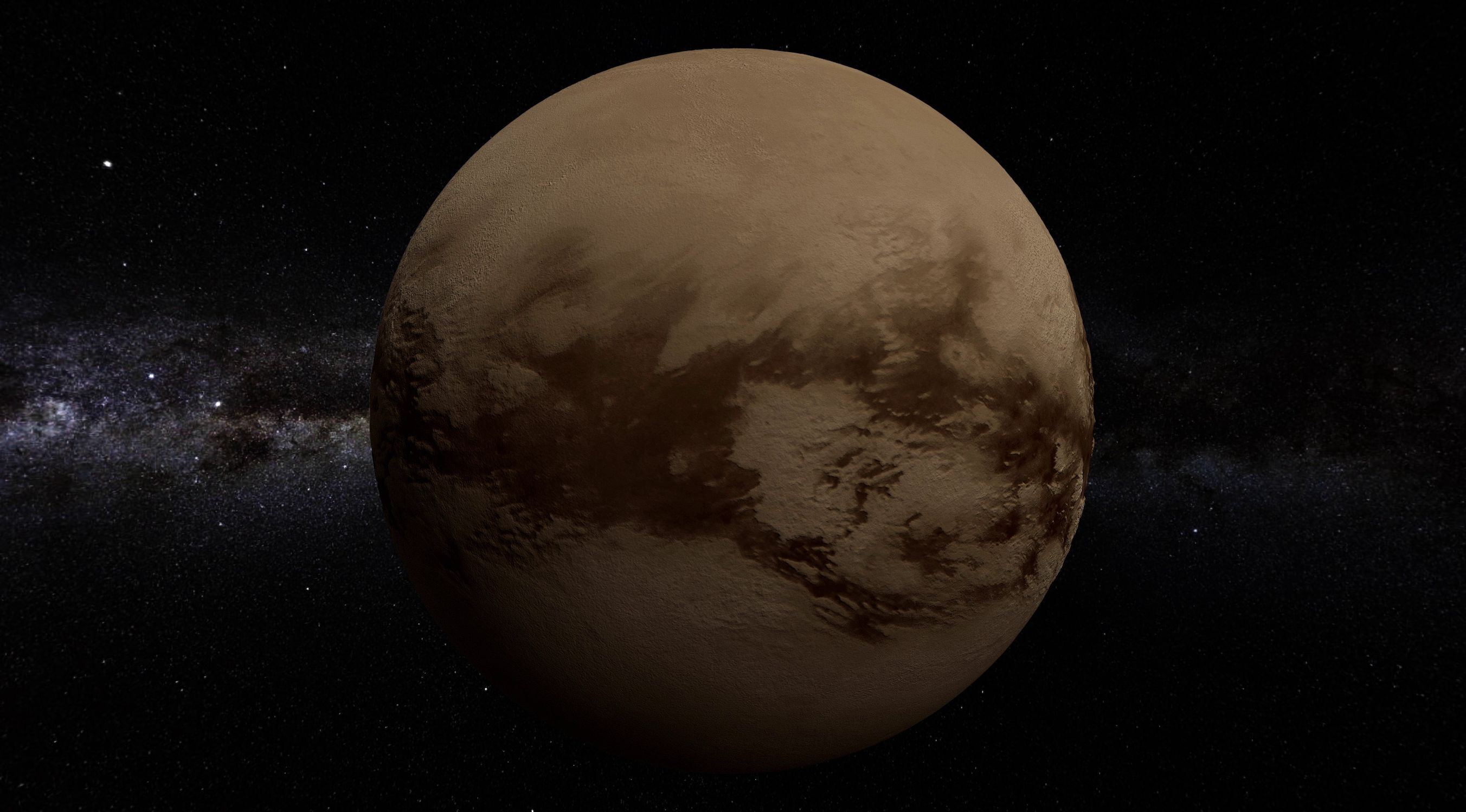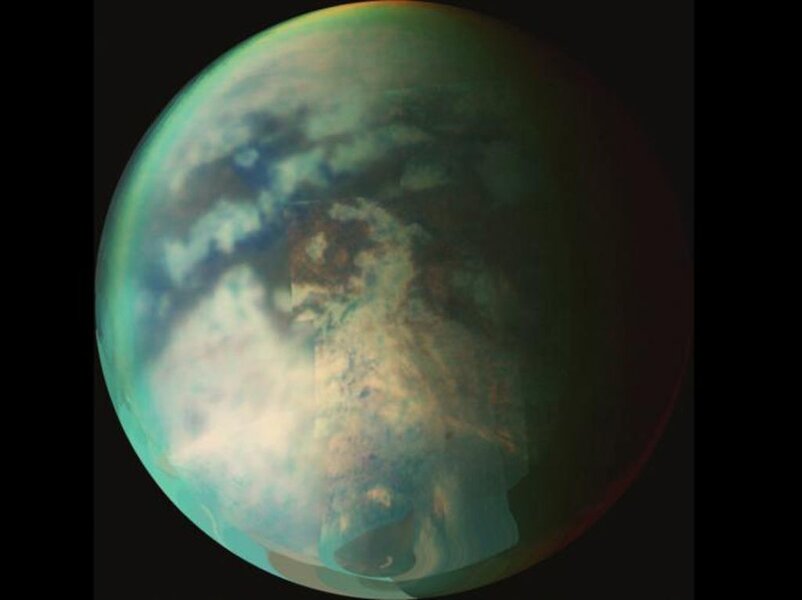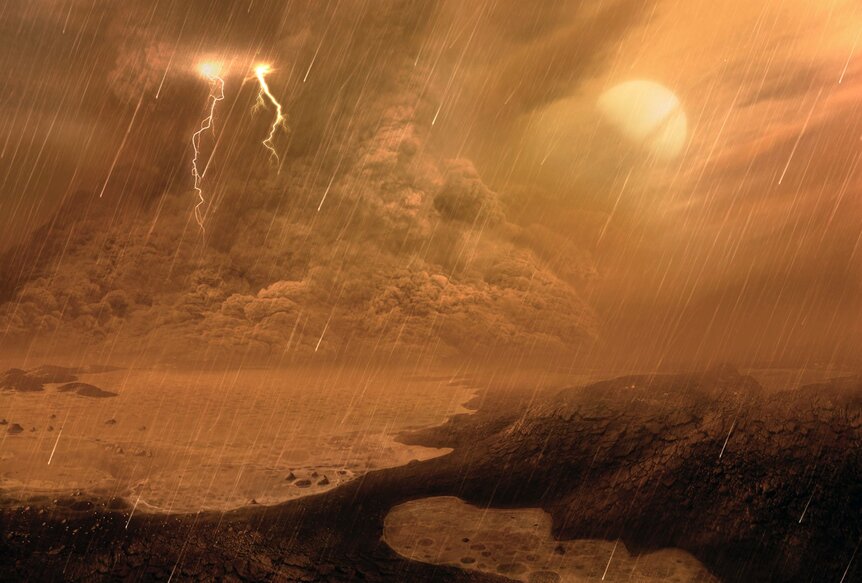Create a free profile to get unlimited access to exclusive videos, sweepstakes, and more!
Saturn's massive moon Titan may generate swarms of dust-fueled twisters

Does Saturn's largest moon contain swarms of dry whirlwinds similar to Earth and Mars? There's a devil of a chance!
Buzzing out of Earth's atmosphere in 2026 and onward to the gas giant Saturn, NASA's Dragonfly mission to the moon of Titan will attempt to document and collect data on the satellite's possible infestation of dust devils and convective vortex activity. This ambitious scientific probe is a rotorcraft lander that will rendezvous with Titan sometime in 2034 to explore that world's potential habitability and study its complicated methane cycle.
A new research paper led by planetary scientist Brian Jackson of Boise State University in Idaho and published in the online journal AGU suggests that theoretical conditions for swirling dust‐laden plumes are perfect, and might significantly contribute to the distribution of dust in Titan's atmosphere.
Previous observations from NASA/ESA's Cassini-Huygens mission to Saturn (2004-2017) confirm that there is intense blowing dust on that monster moon and vast fields of colossal sand dunes piled up at Titan's equator comprising 13% of its total surface. Cassini's Visual and Infrared Mapping Spectrometer also reported regional dust storms near the moon's bulging middle.
Titan is the only moon in our solar system with a defined atmosphere, which is mostly made up of nitrogen. It also displays active hydrology in Earth‐like river canyons, hard-edged gorges, and even small lakes.
"Astronomers have actually seen regional dust storms on Titan, so we know there is dust on Titan and that surface winds can be strong enough to lift it," Jackson tells SYFY WIRE. "Regarding dry whirlwinds on Titan, the temperature structure and winds near the surface of Titan are both consistent with the existence of whirlwinds, as we show in our analysis. On the Earth, we find dust devils where it's dry and dusty, and that's exactly the climate we find in the equatorial regions on Titan."
"We know surface winds on Titan are usually very weak (less than 1 m/s or 2 mph), and so usually there's not much wind to move dust around," Jackson adds. "And so, if they occur on Titan, dust devils may be a very important mechanism for moving dust around. It's possible but speculative that dust grains on Titan might pick up big static charges when they get blown around. Dust devils might help statically charge dust grains, helping transform them into larger sand grains and thereby contributing to the dunes."
The launch of NASA's Dragonfly mission six years from now might provide clearer answers to scientists when the probe touches down on Titan circa 2034, and records evidence of these hypothetical twisters terrorizing the surface.
"Dragonfly will help us test our dust devil hypothesis. Our admittedly simple model predicts that Dragonfly will encounter dust devils each Titan day. If it does detect the devils, that detection will be an important test of our understanding about how dust devils work and how they form."




























